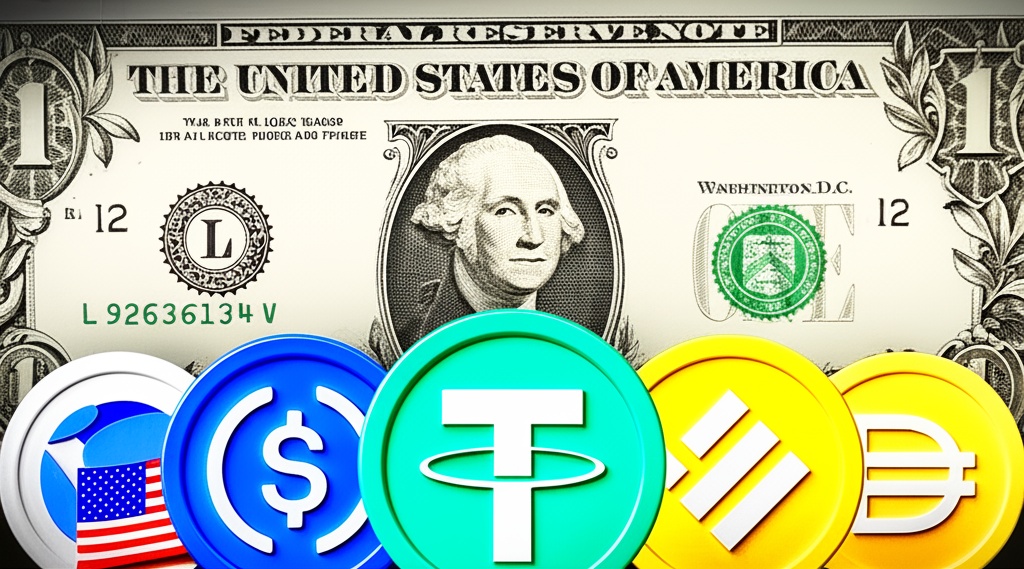Several large US banks are reportedly discussing a plan to launch a joint stablecoin. According to The Wall Street Journal, firms connected to JPMorgan, Bank of America, Citigroup, and Wells Fargo are involved in early-stage talks. The report was also cited by Cointelegraph.

Stablecoins have seen growing adoption across different sectors. A recent Finance Magnates report noted that over 109 million wallets are using stablecoins. Platforms such as Stripe now offer stablecoin payouts to merchants and gig workers. However, many retail brokers have not yet implemented similar features. The scale of usage is drawing attention from traditional financial institutions that have largely remained cautious.
Additional Participants Involved
Other participants include Early Warning Services, the parent company of Zelle, and the Clearing House, a payments network. Sources familiar with the matter said the initiative is still in its initial phase. Progress may depend on regulatory developments and overall market demand for stablecoins.
US Senate Advances Regulation
The reported talks come as the US Senate advances new legislation on stablecoin regulation. On May 20, the Senate voted 66–32 in favor of advancing the Guiding and Establishing National Innovation for US Stablecoins (GENIUS) Act. The bill sets out requirements for collateralization and includes anti-money laundering measures. It is now set for debate on the Senate floor.
You may find it interesting at FinanceMagnates.com: Stablecoins Go Mainstream as Mastercard and MoonPay Partner Across 150M Merchants.
Political Concerns on Profits
White House crypto adviser David Sacks has said the bill is expected to receive bipartisan support. However, some Democratic lawmakers are pushing to add a provision that would prevent President Donald Trump and other US officials from profiting from stablecoins.
In March, Trump and his family launched a digital asset platform, World Liberty Financial, which introduced a stablecoin called USD1. Critics argue that the proposed regulation could benefit the former president.
Stablecoin demand has increased sharply this year. Market capitalization has risen from $205 billion to $245 billion. Yield-bearing stablecoins now account for about 4.5% of the total, with a circulating supply of $11 billion.
Banks See Stablecoins as Threat
Some analysts say this growth is raising concerns within the traditional banking sector. NYU professor Austin Campbell noted that banks may view stablecoins as a threat to their existing business models. Separately, Meta is reportedly exploring stablecoin-based payments for its platforms.
Several large US banks are reportedly discussing a plan to launch a joint stablecoin. According to The Wall Street Journal, firms connected to JPMorgan, Bank of America, Citigroup, and Wells Fargo are involved in early-stage talks. The report was also cited by Cointelegraph.
Stablecoins have seen growing adoption across different sectors. A recent Finance Magnates report noted that over 109 million wallets are using stablecoins. Platforms such as Stripe now offer stablecoin payouts to merchants and gig workers. However, many retail brokers have not yet implemented similar features. The scale of usage is drawing attention from traditional financial institutions that have largely remained cautious.
Additional Participants Involved
Other participants include Early Warning Services, the parent company of Zelle, and the Clearing House, a payments network. Sources familiar with the matter said the initiative is still in its initial phase. Progress may depend on regulatory developments and overall market demand for stablecoins.
Clearing House
A clearing house is defined as an intermediary between two parties, a buyer and seller, which helps facilitate the overall process from trade inception to settlement. Clearing houses streamline the exchange of payments, securities, or derivatives transactions.The clearing house is situated between two clearing firms who also helps reduce the risk of either member firm failing to honor their respective trade settlement obligations.Buyers and sellers enter into legally binding agreements for the e
Stablecoin
Unlike other cryptocurrencies like Bitcoin and Ethereum, stablecoins are cryptocurrencies that have been designed to keep a stable value. Placing a greater emphasis on stability over volatility can be a huge draw for some investors. Many individuals can be turned off from large swings and uncertainty presented by cryptos relative to other traditional assets.Stablecoins control for this volatility by being pegged to another cryptocurrency, fiat money, or to exchange-traded commodities, including

